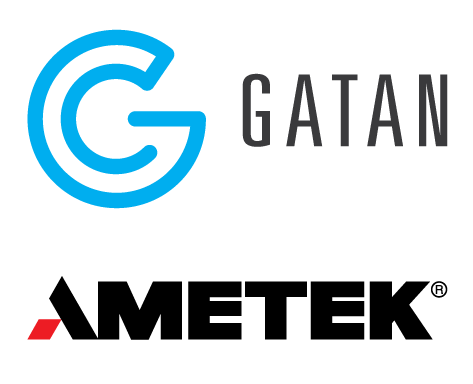The OneView® IS from Gatan is a fiber coupled rapid capture CMOS camera that captures 16 MP images at up to 25 fps, making it the best in class.
Through the application of the STEMx™ system, the scanning probe speed is synchronized to the frame rate of the camera to acquire 4D STEM diffraction datasets at full speed (up to 300 fps at 512 x 512 pixels).
Context
One of the factors that primarily holds back conventional 4D STEM technology is the speed at which diffraction images can be captured at each pixel in the STEM image.
The frame rate of the conventional CCD cameras is the leading reason for this speed limitation (30 fps for 512 x 512 images) and consequently the speed by which 4D STEM datasets can be written and saved on disk.
Speeds as slow as this lead to restrictions in the amount of data researchers can acquire in a certain period of time. They are also not practical for beam sensitive specimens with limited allowable doses before they are structurally transformed or even damaged.
Materials and Methods
For this series of experiments, cross-section specimens isolating individual ZnO nanowires (NW) were chosen.
As demonstrated in a previous publication [Adv. Mater. Interfaces 2016, 1500598], the direction of growth of these nanowires on a GaN substrate can be directed as a function of substrate Ga-ion bombardment, which gives rise to different local surface boundaries to partition NW heterojunctions into various orientations and segments.
Previously, the tolerances of crawling nanowires to strain and lattice mismatch were determined by HRTEM measurements.
However, decisive quantitative strain measurements have presented challenges as a result of the beam-sensitive nature of the specimen and the lack of a statistically sufficient number of diffraction measurements from the substrate-NW interface region.
Utilizing the STEMx system with the OneView IS camera, two (256 x 85 x 1024 x 1024) datasets were acquired, each in under two minutes, from NWs developed on bombarded and non-bombarded substrates.
As well as the visual comparison of median diffraction patterns at various interface regions, 2D strain maps were determined along orthogonal axes within the diffraction pattern and with reference to the unstrained GaN substrate.
Through the application of the STEMx Analytical Suite, the relative in-plane, out-of-plane, shear and rotation at the interface can be swiftly gauged for extensively large datasets (each >40 GB).
Overall, the present strain mapping results display the character and degree of lateral strain (ε_uu) more relaxed in directions parallel to the nanowire long axis through the ion bombarded regions (Figure 1) in contrast to the localized intense lateral strain points perpendicular to the same axis (ε_uu in Figure 2).
Conversely, the relative degree of compressive strain (ε_vv) was seen to be similar in either case.

Figure 1. HAADF (top) of nanowire cross-section. Expanded view of CBED diffraction map taken over 256 x 85-pixel area corresponding to dotted outline and extracted using STEMx software shown below. Localized points of strain in the lateral (ε_uu) crystalline dimension and compressive strain (ε_vv) are shown below. Image Credit: Gatan Inc.

Figure 2. HAADF (top) of nanowire cross-section. Expanded view of CBED diffraction map taken over 256 x 85-pixel area corresponding to dotted outline and extracted using STEMx software shown below. Localized points of strain in the lateral (ε_uu) crystalline dimension and compressive strain (ε_vv) are shown below. Image Credit: Gatan Inc.
To further support these conclusions, further data collection is needed. Current experiments suggest there are new paths to explore in understanding and controlling the lateral epitaxy of nanocrystals.
The consequences of these results can be far-reaching, touching areas of future fabrication of nanowire-based devices, for example, a combination of top-down and bottom-up fabrication techniques or introducing II-V and III-nitride semiconductors into industrial processes.
Summary
Utilizing the STEMx system, the rapid frame rate OneView camera was applied to push the STEM probe on beam-sensitive ZnO NWs, developed on GaN substrates. Rapid 4D STEM data acquisition significantly reduced the specimen damage that was previously encountered throughout data acquisition (saving time and money).
The data captured using the OneView camera offers high-resolution information with the capacity to direct the observation of single systems over large length scales.
Intelligent modeling of this data facilitates the visualization of nanoscale effects in an entire microsystem. Such results generate insights into the mechanisms of nano epitaxial growth and fundamental information that contributes to the integration of these systems into future technologies.

This information has been sourced, reviewed and adapted from materials provided by Gatan, Inc.
For more information on this source, please visit Gatan, Inc.